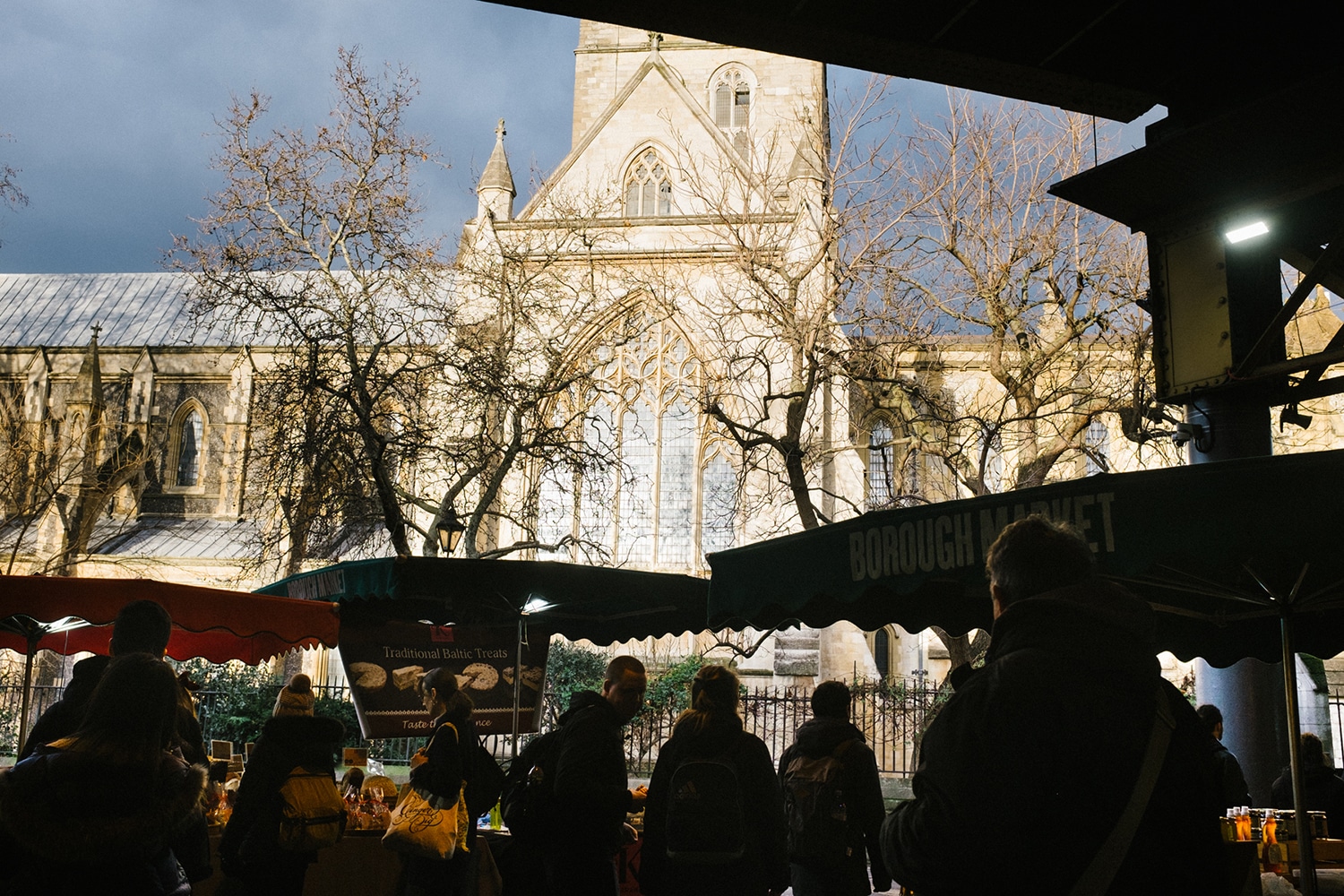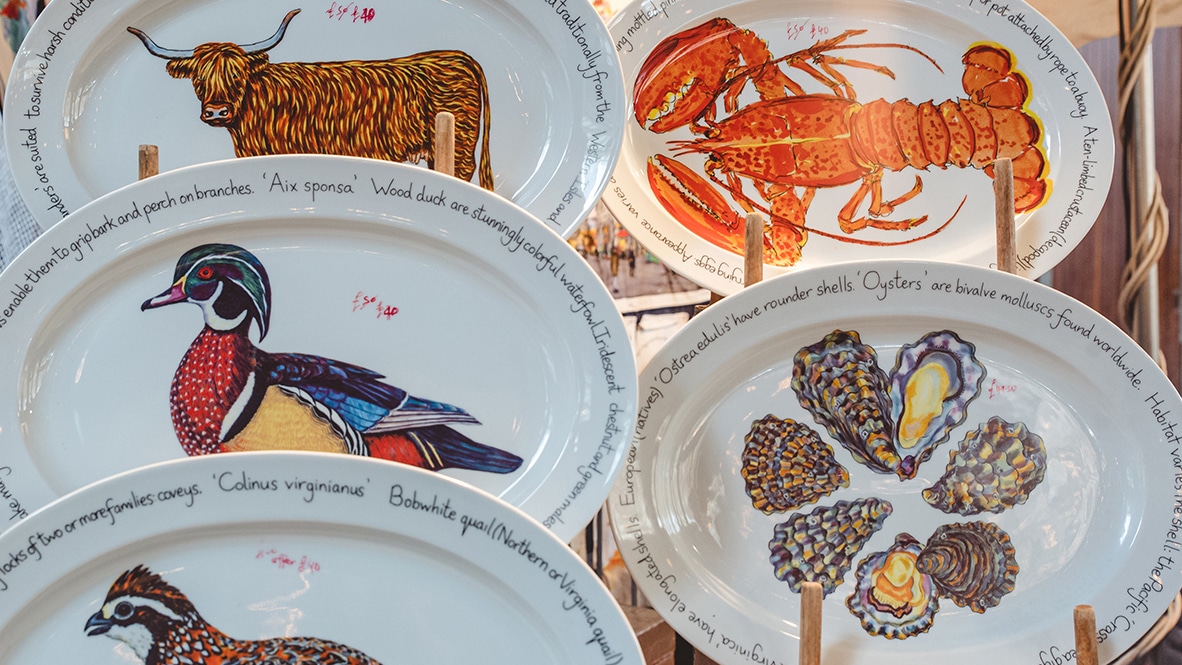Q&A: Mark Dobbie & Andy Oliver of Kolae
The friends behind Borough’s new Kolae restaurant on southern Thai cuisine, cooking over fire and the joys of working beside a market
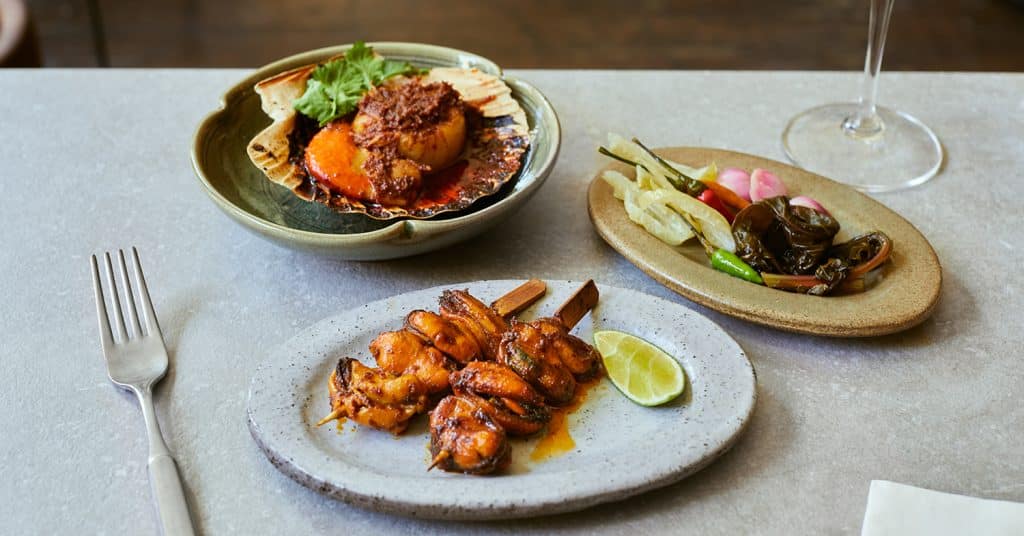

“WHAT WE TRY TO REMIND PEOPLE IS THAT THAI FOOD IS BROAD AND DIVERSE AND HAS SO MANY DIFFERENT INFLUENCES”
Interview: Mark Riddaway / Images: Harriet Langford, Ben Broomfield
Despite being Australian and British respectively, chefs Mark Dobbie and Andy Oliver have become impassioned, fast-talking evangelists for the food of a very different country: Thailand. After falling head over heels in love with this most diverse and characterful of cuisines, they’ve devoted their lives to exploring its incredible depth, first through their Som Saa restaurant in east London and now through Borough Market’s latest arrival, Kolae, which opened on Park Street in October.
Mark learnt his craft at Nahm, the legendary restaurant run by his fellow Australian David Thompson, the first chef in Britain to win a Michelin star for Thai cooking. Andy, who abandoned an office job to gamble on a career in cooking, arrived at Nahm to complete a ‘stage’ (an internship, essentially) after a successful stint on MasterChef. After bonding over curry pastes, the pair began working on Thai cookery projects outside of the day job, including a pop up at Nuno Mendes’s highly influential Loft Project. After Nahm closed in 2012, Mark headed to America to work at Pok Pok and Andy spent a couple of years in Bangkok working at Bo.lan. On their return to London, the friends joined forces again to open Som Saa, initially as a year-long residency at Climpson’s Arch in London Fields, then, after a successful crowdfunding campaign, as a permanent restaurant in Spitalfields.
Days before Kolae’s opening, with the sound of building work clanging in the background, Mark and Andy sat down with us to explain the concept behind their new restaurant.
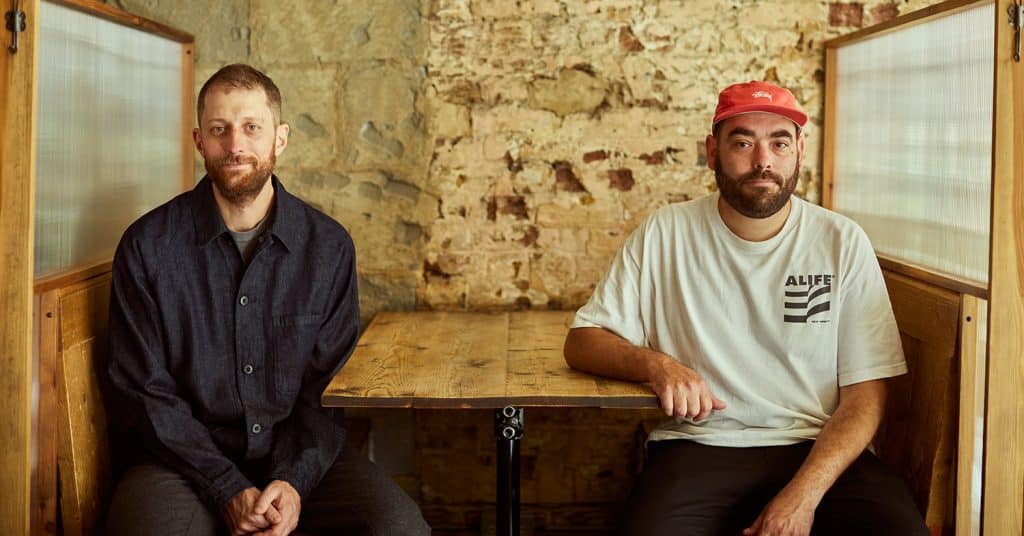
First things first, what’s the correct pronunciation of your new restaurant’s name?
Mark: I think we’ll be explaining this a lot over the years! When you translate from Thai script to the English alphabet, the sounds don’t line up perfectly – it’s never quite phonetically accurate. The name is pronounced somewhere between ‘Gol-ay’ and ‘Kol-ay’ – the sound is between a G and a K, basically. We like the way it looks with a K, so we went down that route.
So, what is kolae?
Andy: It’s a dish associated with the far south of Thailand. It’s incredibly delicious but not really known outside of Thailand. It’s based on coconut curry sauces – almost like a cousin of satay, but a bit more complex. The protein is dipped in the curry sauce and then repeatedly basted with it as it’s grilled. There’s lots of variety out there in the sauce, the technique and the proteins that are used. It’s most commonly chicken but it can be seafood – whole bits of fish or shellfish – and, particularly in southern Thai Muslim communities, meats like goat or mutton. Some of the sauces have lots of spices in them, making them almost Indian or Persian in their inflection. And others have no dried spice – it’s more like a classic Thai curry paste with lots of black pepper and lemongrass. It’s a whole family of dishes, and we’re going to be exploring it fully.
You’re cooking these kolae dishes over fire. Is that an important part of the concept?
Andy: Fire is what forms the heart of so many Thai flavours and dishes. Even dishes that you wouldn’t think have grilled things in, do in fact have grilled things in – often in the curry paste. At Som Saa, we’ve always cooked over wood and charcoal but we’re now putting the fire a bit more front and centre, almost building the menu around the grill. At Kolae, we’re pressing fresh coconut cream in the kitchen, and the leftovers – they’re almost like used coffee grounds – are a perfect smoking medium on the grill, so we’re using a combination of charcoal, wood and coconut.
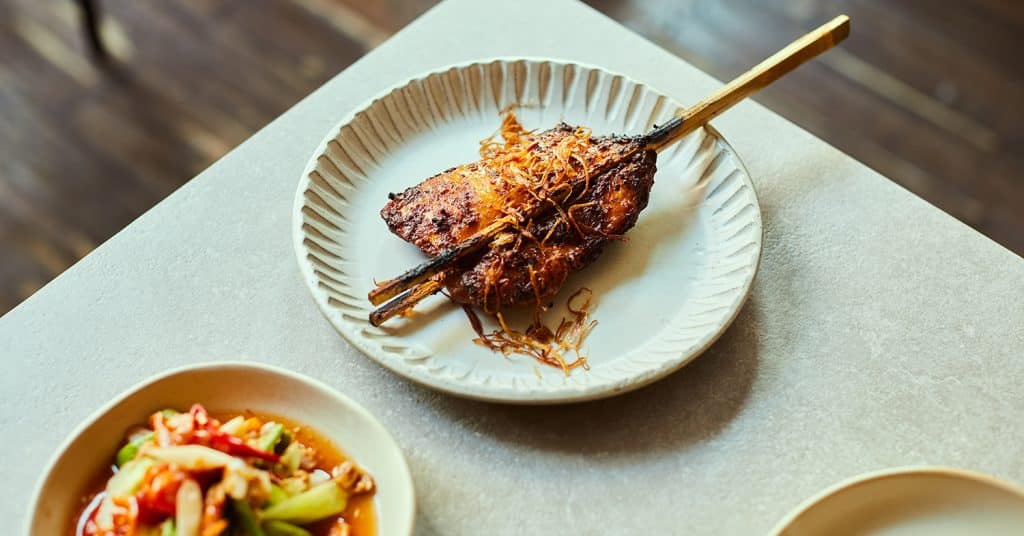
Of all the cuisines in the world, what is it about Thai that fascinates you so much?
Mark: I think, for me personally, it’s a thirst for knowledge. There are so many facets to Thai food. They’ve had relatively open borders throughout their history, so there are all these influences from trade and migration, and every region is different as a result. Learning about the history and culture is something that can keep you engaged for a long time, and the food is so tied into all that. In Britain and Australia, we enjoy our food, but I’m not sure we have quite the same cultural connection to it that the Thai people do.
High street Thai restaurants in this country have tended to dampen down some of the cuisine’s more intense flavours so as not to alarm the British palate. What’s your approach?
Andy: I think our first port of call is always to represent Thai food as you would find it in Thailand. There are certain dishes that aren’t truly themselves if you change them too much. Some Thai dishes are notorious for having really big chilli heat as part of their foundation, and if you start reducing the amount of chilli, you’re altering the whole thing. What we try to remind people is that Thai food is broad and diverse and has so many different influences. Some of the traditions don’t have a spicy palate at all. There’s big Chinese influence, and chilli isn’t part of that. A lot of the Muslim food is not super-spicy. A lot of the Peranakan food in the south is not super-spicy. Our preference is to guide people towards ordering those dishes, rather than changing dishes that come with very intense flavours. Those intense flavours are the heart and soul of the dish.
Mark: There’s a big responsibility on front-of-house to help guide people. If someone comes in and orders a dish that’s full of fresh green peppercorns and little green chillis, and they don’t really feel like much rice, they’re going to blow their face off. If one of our team is able to help explain that kolae, for example, isn’t super-spicy, and you should maybe have that with some of the spicy things on the side, and some of the tart salads, you end up getting a balanced meal while also enjoying Thai food from a different perspective.
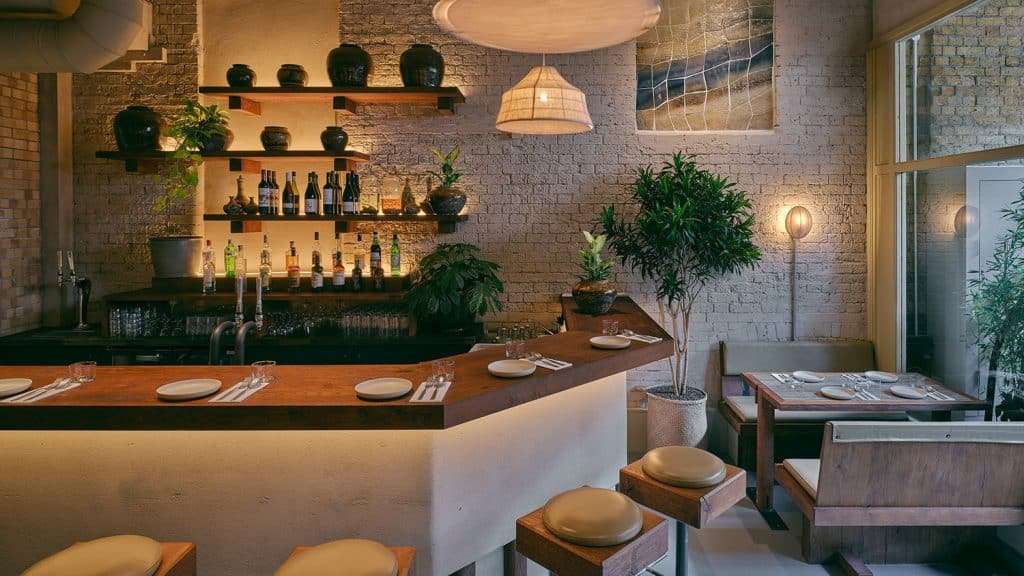
In many of the dishes, you’re using seasonal British ingredients that wouldn’t be found in Thailand. How does that fit into your ethos?
Mark: Good produce is just something that excites us. When you get good produce in, you want to use it. Knowing a bit of the cultural background, the history of dishes, you start to understand how a bitter herb in Thailand can also be represented by a bitter leaf grown in the UK, and can fit perfectly into that slot in the dish. You’re still being respectful to where that food’s come from, but also being conscious of your own footprint. Also, buying ingredients from our doorstep means we can support farmers who we know are doing things from a position of passion rather than profitability. That all flows back through into the dish. It’s about finding a balance between a dish being as it would be in Thailand, and using the best quality ingredients that we can, produced by people whose ethos chimes with ours.
What’s it like having a produce market right beside your restaurant?
Andy: We’re incredibly excited to be running a restaurant here. It’s an emotional thing, walking in here to work every day. On a personal note, markets are very special to me. A good food market is a happy place for anyone interested in food. Borough Market is somewhere that, 20 years ago, became the centre of the universe as far as I was concerned: seeing produce I’d never seen before, shopping for things I’d never cooked before. In Thailand, as well, markets are everything. Getting up early in the morning and being in a market as it’s getting going is like entering a whole different world. It’s not just about food, it’s as much about people as well. I love the idea of being part of a community – a community of traders, restaurants, shoppers. We feel very privileged to be here.
